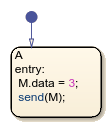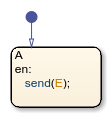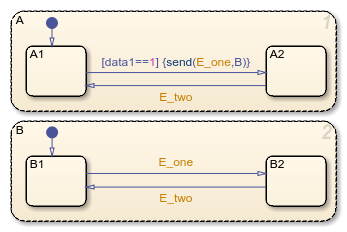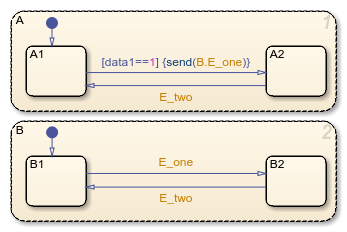send
广播消息或事件
语法
描述
示例
提示
如果图发送的消息超出接收队列的容量,就会发生队列溢出。队列溢出的结果取决于接收队列的类型。
当内部队列中发生溢出时,Stateflow® 图会丢弃新消息。您可以通过设置消息的队列溢出诊断属性来控制诊断操作的级别。请参阅Queue Overflow Diagnostic。
当外部队列中发生溢出时,Queue (Simulink) 模块或者丢弃新消息,或者覆盖队列中最早的消息,具体取决于模块的配置。请参阅Overwrite the oldest element if queue is full (Simulink)。外部队列中的溢出始终会导致警告。
避免使用无向局部事件广播。无向局部事件广播会导致在图中产生不必要的递归行为。请改为使用有向广播发送局部事件。有关详细信息,请参阅广播局部事件以同步并行状态。
使用
send运算符将事件发送到调度编辑器。调度编辑器使您能够调度非周期性分区的执行。有关在调度编辑器中使用send运算符的详细信息,请参阅Events in Schedule Editor (Simulink)。
版本历史记录
在 R2006a 之前推出



